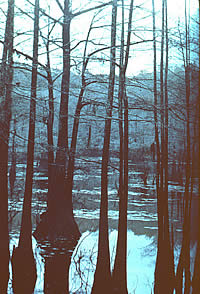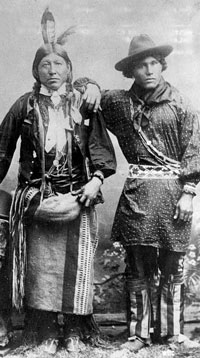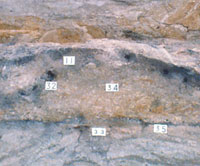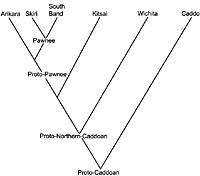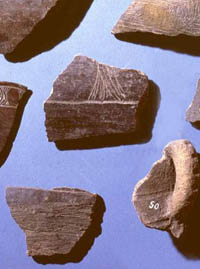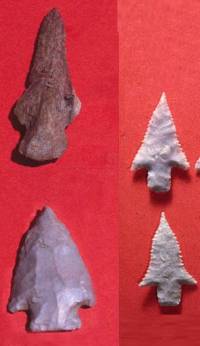Tracing Early History
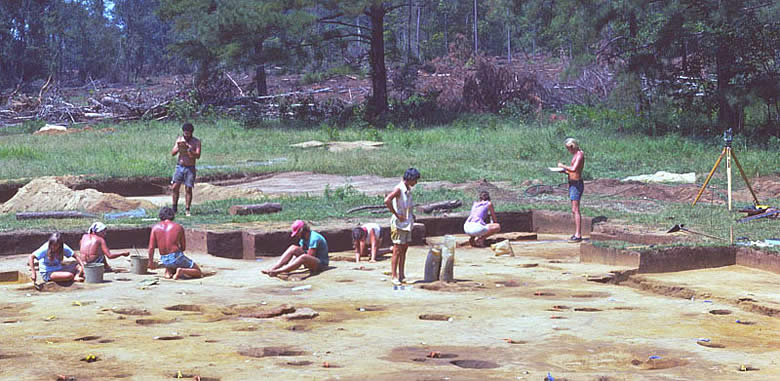

Charlemagne was crowned the first Holy Roman
Emperor in A.D. 800. At about the same time on the other side of
the world, early Caddo culture was emerging as the westernmost expression
of the larger Mississippian cultural tradition.
|
The Caddo cultural tradition can be traced back confidently to at least 1200 years ago or about A.D. 800, the year Charlemagne was crowned the first Holy Roman Emperor by Pope Leo III. We know about Charlemagne through written accounts by eyewitnesses and later historians. But the Caddo, like all other North American tribes north of Mexico, did not have a writing system; instead they kept history in their heads in what must have been a very lively and complex oral tradition. Through the recitation of sacred stories and songs, oral traditions can and often do convey significant memories and understandings of times long past, contrary to what many of us raised in societies with strong written traditions may believe. Most of the particulars of early Caddo history that were maintained by oral tradition have been lost to time, especially to the drastic changes and catastrophic losses of life forced upon the Caddo by the invasion of America by Europeans. Ironically, the "literate" European cultures brought about the wholesale destruction of the carefully maintained oral histories of so many "nonliterate" Native American societies. Be that as it may, there are surviving bits of early Caddo history preserved in the traditions maintained by Caddo peoples today, in early Spanish and French accounts, and in later written histories as well as in the oral traditions recorded by ethnographers and folklorists. These sources serve us reasonably well for the last 300 years or so, but beyond that we do not have much to go on. Some of the recorded Caddo stories, origin "myths," or "legends" collected by late 19th-century scholars do contain tantalizing clues about early Caddo ancestors. For instance, ethnologist James Mooney recorded this story: |
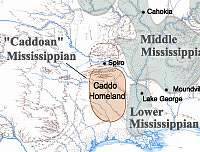
Shown here are the major cultural areas of the
Mississippian world between about A.D. 1000-1600. Within each area
the timing and nature of Mississippian developments varied greatly
and none of the areas was ever culturally uniform. The "Caddoan"
Mississippian area includes the main Caddo Homeland and the Arkansas
Basin to the north. Base map by Erwin Raisz, culture areas adapted
from Brian Fagan.
|
|||
|
|||||
|
There are other recorded Caddo origin stories, most of them mythical and allegorical in nature. These are the Caddo equivalents of the biblical stories of Adam and Eve and of the Great Flood replete with flawed heroes, human/animal interactions, floods, and the brink of world destruction. While these help us understand Caddo worldview, they tell us few facts about early Caddo history. As discussed in Learning about the Caddo Past, the three major sources of information about early Caddo history are archeology, biological anthropology, and linguistics. Archeology and biological (or physical) anthropology depend on archeological finds. Studies of the Caddoan languages suggest that ancestors of the Caddo and the ancestors of the Plains Caddoans (Wichita, Kichai, Pawnee, and Arikira) split from a common ancestor (ancestral group) in the distant past, at least 3,000 years ago and probably even earlier. The Caddo cultural tradition as recognized now by archeologists begins about 1200 years ago (A.D. 800). What can we say about the ancestors of Caddo speakers between 1200 and 3,000 years ago? The short answer is "not enough." While we know something about various sites and cultural patterns in and near the Caddo homeland between about 1200-3000 years ago, we are not yet certain which patterns represent the direct ancestors of today's Caddo. Explaining how and why the Caddo cultural tradition developed when and where it did and how it changed through time is a challenging task for four reasons that must be made clear. (1) Archeological cultures are not the same as human social groups. Distinct human social groups (tribes, peoples, nations) are typically defined based on differences in language, dress, physical appearance, territory, and custom. Archeologically, many of these distinctions are invisible: stones and pottery sherds do not speak. Therefore, an archeological "culture" is merely a perceived pattern of sites with similar arrays of preserved artifacts that may or may not correspond to a real social group. Archeologists call these patterns cultures, traditions, and phases. (2) Archeologists dig up stones, bones, and pottery sherds, not cultures. Linking specific types of artifacts to specific archeological cultures is a tedious and tenuous process that involves much guesswork. It is not until the arrival of European chroniclers that we have the first written accounts that give tribal names and meager descriptions. Even then it is often very difficult to link known groups to archeological patterns. (3) Archeologists need sizable and dated artifact samples from many different places before they can make good inferences regarding how archeological sites and the people who created them relate to one another. We need large samples in order to detect statistically meaningful patterns. But large artifact samples do not have much meaning unless we know how old the artifacts are and the specific places they came from. While archeologists can often estimate the "relative" or approximate age of a distinctive artifact such as a pottery sherd or whole vessel of a particular style, most artifacts are not distinctive enough to be dated tightly. The most reliable dating method in the Caddo area is radiocarbon dating, a method of estimating the age of organic materials such as charred wood or bone based on the measured ratio of radioactive C14 to normal carbon. But radiocarbon dates are expensive (up to $700 apiece) and multiple dates are needed from a single context (hearth, house, layer, etc.) to obtain secure calibrated date ranges. (4) Most archeological sites contain a mixture of artifacts from different time periods and cultures. This is simply because most sites are located near streams and rivers in places well suited for human occupation. Even today many farmhouses, towns, and cities stand atop traces of ancient settlements. When the materials from different periods of time are neatly stacked into separate layers like a layer cake, archeologists can recognize changes through time. Most sites in the Caddo homeland are not neatly layered and materials from different time periods are often mixed together, making it difficult or impossible to sort out what goes with what. Our understanding of the ancestral traces of the Caddo cultural tradition is hampered by all four of these factors. The physical evidence we do have from sites in the region that are thought to date between 1000-3000 years ago is not very abundant and often problematic. Overall, relatively few sites dating to this time span have been identified confidently and most contain a mix of materials of different age. Even fewer sites have been excavated and of these, only a handful can be considered securely dated. So we are forced to make do with meager evidence as we try to sketch out the early history of the ancestral Caddo. Keep these limitations in mind as you explore the Caddo Ancestors exhibit. In archeology, our interpretations can only be as good as the data we base them on. As more and more is learned, archeologists reevaluate earlier ideas and interpretations, refining some, rejecting others, and reaching new understandings. |
|||||
